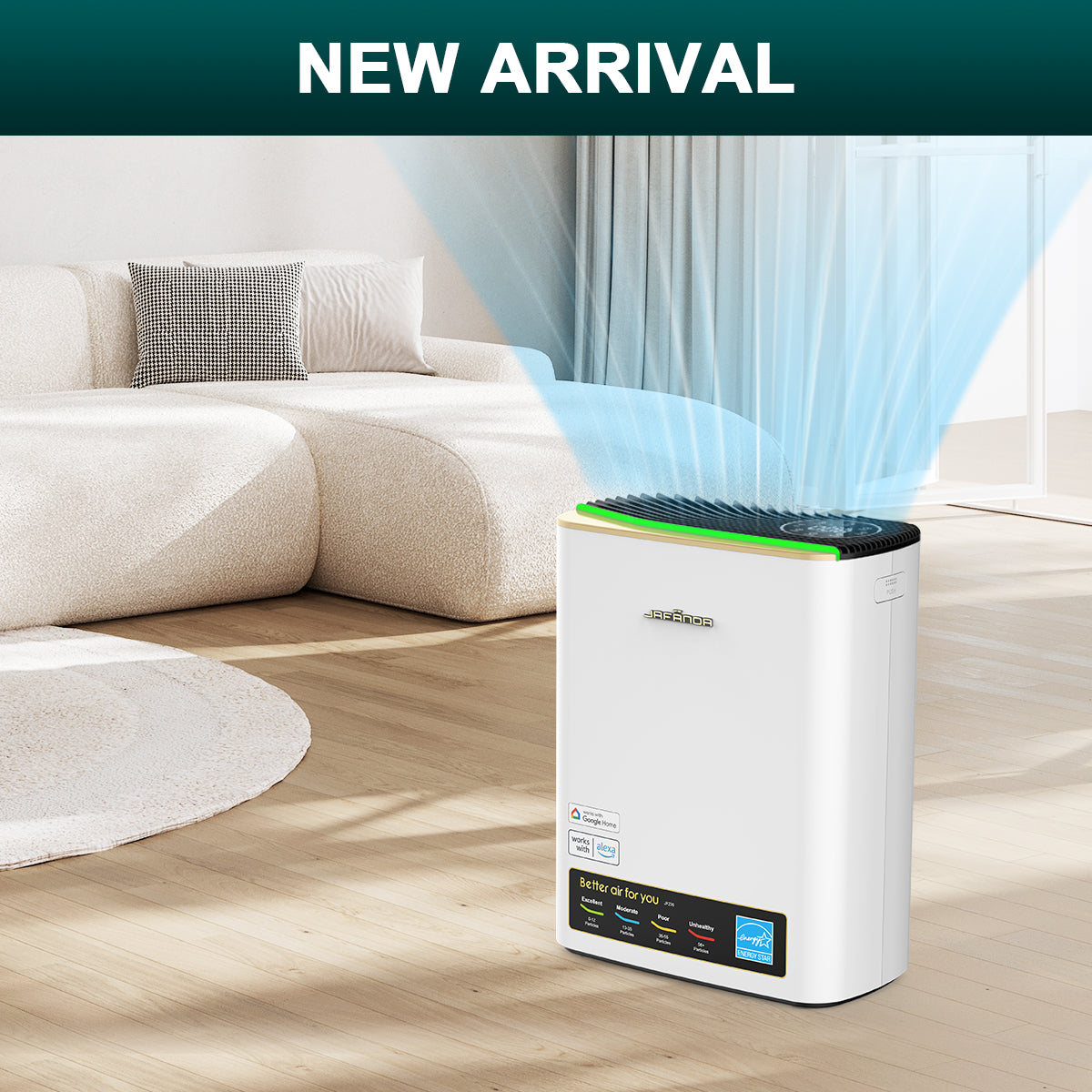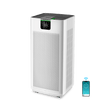introduce
Particles with equivalent diameter less than 10um are inhalable particles
Particles smaller than 0.1 um in diameter are considered as ultrafine particles, while particles smaller than 2.5 um in diameter are considered as fine particles.
The air purifier can help you or your family reduce the inhalation of these particles by using electrostatic or mechanical methods to capture these particles in the electrostatic filter or HEPA filter respectively.
Pollen, dust, pet dander, VOC and SVOC are the most common allergens in indoor environment
When you inhale these allergens, they can cause asthma attacks, sneezing and other symptoms. The most common allergens are pollen and dust.
The size of pollen grains of different plants is also different. The diameter of pollen grains of most varieties is generally between 15 and 50 microns, the smallest is less than 10 microns, the medium is 25 to 50 microns, the large is 50 to 100 microns, and the extra large can reach more than 100 microns, and very few are more than 200 microns. Pollen particles are easy to deposit in the respiratory tract (nose and throat) and pulmonary bronchi, causing allergy. Pollen is the male germ cell of plants carried by air.
Do air purifiers remove pet dander? Pet dander generally contains pet sweat excrement and pet bacteria and virus equivalent diameters are 0.1um-100um. Air purifiers for pet allergies can help remove pet dander from your indoor environment and reduce your pet allergies.
Dust is usually composed of tiny particles in the air that can be inhaled into the lungs.
Pet dander usually contains pet sweat, pet bacteria and viruses. About 75% of the dander particles are 5 to 10 microns in diameter, and the remaining 25% are 2.5 microns or less. The equivalent diameter of bacteria is 0.4um to 5um, and the equivalent diameter of viruses is 0.02um to 0.2um. The air purifier can help remove pet dander in the indoor environment and reduce pet allergy.
They are difficult to filter out from the air
Dust, pollen and pet dander are small enough to pass through the HAVC filter with low penetration efficiency. This makes them a real problem for people with allergies. The good news is that the air purifier can help reduce allergens in the home, and the purifier with activated carbon filter screen can also remove volatile organic compounds and semi volatile organic compounds!
There are two main ways for the air purifier to capture these allergens: activated carbon filtration and HEPA filtration. The activated carbon filter can absorb harmful gases, such as volatile organic compounds and semi volatile organic compounds, while the HEPA filter screen with micro static electricity can capture fine particles as small as 0.01 um.
Active carbon filtration and capture of VOCs and other harmful gases
The carbon filter captures volatile organic compounds by using the developed microporous structure of activated carbon, and removes these harmful gases from the air through the air purifier, so that they can no longer stimulate your nose, lungs and cardiovascular system.
Air purifiers can help reduce the amount of allergens and make breathing easier.
Do air purifiers help with pet allergies? The working principle of the air purifier is to collect allergens from the air and place them on the filter. The use of air purifier can reduce the number of allergens such as dust mites, pet dander, pollen, bacteria, viruses, mold spores, VOC and SVOC in indoor air.
Air purifiers can effectively remove harmful pollutants, and they can really improve indoor air quality!
conclusion
It is difficult to breathe because of allergens in the air. The air purifier can help remove some allergens in your home, making your breathing easier. Air purifier with activated carbon filter and HEPA filter is preferred.











Leave a comment
All comments are moderated before being published.
This site is protected by hCaptcha and the hCaptcha Privacy Policy and Terms of Service apply.